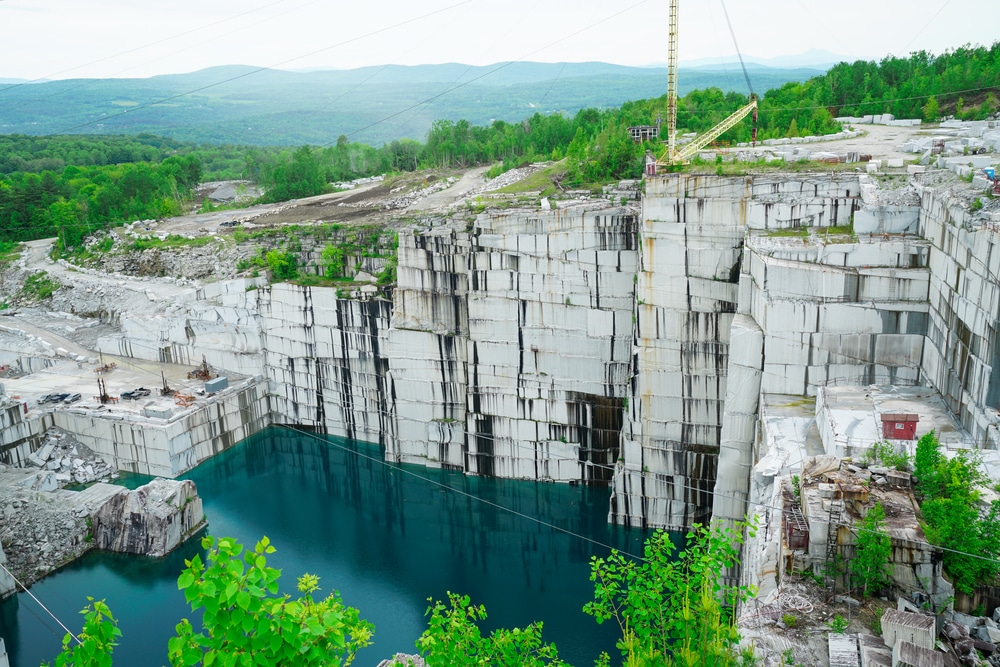A Trip Through Granite Quarries in South Africa: Introduction Nature's Virtuosity
A Trip Through Granite Quarries in South Africa: Introduction Nature's Virtuosity
Blog Article
Discovering the Rich Background and Lasting Practices of Granite Quarrying
As we stand on the precipice of uncovering the complex tapestry of granite quarrying, a journey with time discloses not simply the physical act of extracting stone yet likewise the social and historical relevance woven right into the extremely textile of this method. From the old origins that laid the foundation for modern-day quarrying strategies to the sustainable methods that are forming the future of this sector, each chisel mark on granite surfaces tells a tale waiting to be unearthed (granite quarries in south africa). The legacy of granite quarrying extends much past mere extraction; it is a testimony to human resourcefulness, strength, and the long-lasting appeal of this stunning rock
Old Beginnings of Granite Quarrying
Dating back to old civilizations, the practice of quarrying granite has been an important component of human background and architectural innovation. The earliest proof of granite quarrying dates back to ancient Egypt, where enormous pyramids and complex sculptures were crafted from this sturdy stone. The Egyptians utilized primitive tools to extract granite blocks from quarries, showcasing the significance of this material in their monumental constructions.
Moving forward in history, the Greeks also made substantial contributions to the quarrying of granite. The Greeks used granite in various architectural wonders, such as holy places and statuaries, showing their skill in shaping and carving this durable rock. The Romans better improved the techniques of quarrying granite, using innovative devices like blades and hammers to essence and shape granite for their renowned frameworks.
Via the centuries, the practice of quarrying granite has actually evolved, with contemporary innovations improving efficiency while maintaining the classic allure of this all-natural stone - granite quarries in south africa. From ancient worlds to contemporary builders, the tradition of granite quarrying remains to form our globe
Advancement of Quarrying Methods
The evolution of quarrying strategies has actually been marked by a continuous development towards greater performance and precision in extracting granite. From the basic methods employed by our forefathers to the sophisticated modern technologies used in modern quarrying operations, the market has undertaken considerable improvements. Early quarrying techniques involved hands-on labor with basic devices such as blades, hammers, and wedges to extract granite blocks from the planet. As people progressed, methods like fire-setting and primitive explosives were presented to help with the extraction process.
In more recent times, the arrival of machinery reinvented the quarrying sector, enabling quicker removal rates and enhanced performance. Technologies such as diamond cord saws, high-pressure water jets, and pneumatically-driven drills have come to be conventional in modern-day quarries, enabling specific cutting and decreased waste. Improvements in computer-controlled equipment and 3D modeling have enhanced quarrying procedures, leading to marginal ecological influence and improved sustainability practices. As the demand for granite continues to increase, the development of quarrying methods stays important to meeting industry needs efficiently and sustainably.
Social Value of Granite
Granite holds a profound cultural relevance across various worlds due to its long-lasting visibility in architectural work of arts and prized monoliths. From the impressive pyramids of Egypt to the complex carvings of the Angkor Wat temple in Cambodia, granite has been a product of option for revealing majesty and longevity in cultural heritage. In ancient Rome, granite columns adorned holy places and public buildings, representing stamina and durability. The cultural significance of granite expands past its physical features; it embodies strength, stability, and eternity, making it a symbol of withstanding traditions and traditions.

Sustainable Practices in Quarrying
In the middle of the abundant history of granite quarrying and its social relevance lies an expanding emphasis on sustainable practices within the sector. As environmental awareness and worries regarding source exhaustion have increased worldwide, the quarrying sector has actually increasingly welcomed sustainable approaches to reduce its impact on the atmosphere and surrounding neighborhoods.

Additionally, recovery and recovery of quarry websites post-extraction are important to lasting practices. By bring back quarried locations to an all-natural or beneficial state, such as producing wild animals environments or entertainment rooms, quarriers can offset the environmental footprint of their operations and add favorably to the regional environment.
Tradition of Granite Quarrying
With a historical background steeped in craftsmanship and commercial progression, what withstanding impact has granite quarrying left on the landscape of modern culture? The tradition of granite quarrying transcends plain removal methods; it has formed architectural marvels, city landscapes, and cultural heritage worldwide. The durable nature of granite has actually made it a favored choice for monoliths, buildings, and infrastructure, standing as a testimony to the ability and artistry of quarry employees across generations.
Furthermore, the economic impact of granite quarrying can not be ignored. The market remains to give work opportunities and drive regional economic climates in areas where granite extraction is widespread. It has additionally spurred technical innovations in quarrying techniques and devices, causing more effective and sustainable practices.
In regards to sustainability, the tradition of granite quarrying consists of initiatives to mitigate environmental effects via reclamation jobs and liable source management. By balancing financial passions with ecological stewardship, the industry aims to make sure that future generations can remain to gain from this enduring natural deposit.
Final Thought

Report this page